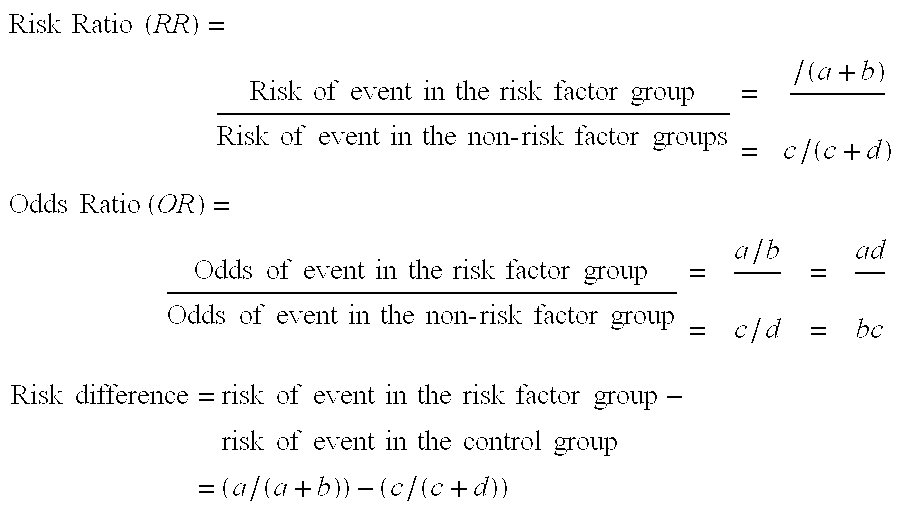Genetic predictability for acquiring a disease or condition
a technology of gene predictability and disease, applied in the field of gene predictability for acquiring disease or condition, can solve the problems of no way, no way, and the biggest health threat facing the world's population
- Summary
- Abstract
- Description
- Claims
- Application Information
AI Technical Summary
Problems solved by technology
Method used
Image
Examples
Embodiment Construction
[0026] A “polymorphism” in a gene is one of the alternative forms of a portion of the gene that are known to occur in the human population. For example, many genes are known to exhibit single nucleotide polymorphic forms where the identity of a single nucleotide residue of the gene differs among the forms. Each of the polymorphic forms represent a single polymorphism, as the term is used herein. Other known polymorphic forms include alternative forms in which multiple consecutive or closely spaced, non-consecutive nucleotide residues vary in sequence, forms which differ by the presence or absence of a single nucleotide residue or a small number nucleotide residues, and forms that exhibit different mRNA splicing patterns.
[0027] A “single nucleotide polymorphism” (“SNP”) is one of the alternative forms of a portion of a gene that vary only in the identity of a single nucleotide residue in that portion.
[0028] A “disorder associated polymorphism” is an alternative form of a portion of...
PUM
| Property | Measurement | Unit |
|---|---|---|
| strength of correlation | aaaaa | aaaaa |
| strength | aaaaa | aaaaa |
| blood pressure | aaaaa | aaaaa |
Abstract
Description
Claims
Application Information
 Login to View More
Login to View More - R&D
- Intellectual Property
- Life Sciences
- Materials
- Tech Scout
- Unparalleled Data Quality
- Higher Quality Content
- 60% Fewer Hallucinations
Browse by: Latest US Patents, China's latest patents, Technical Efficacy Thesaurus, Application Domain, Technology Topic, Popular Technical Reports.
© 2025 PatSnap. All rights reserved.Legal|Privacy policy|Modern Slavery Act Transparency Statement|Sitemap|About US| Contact US: help@patsnap.com



